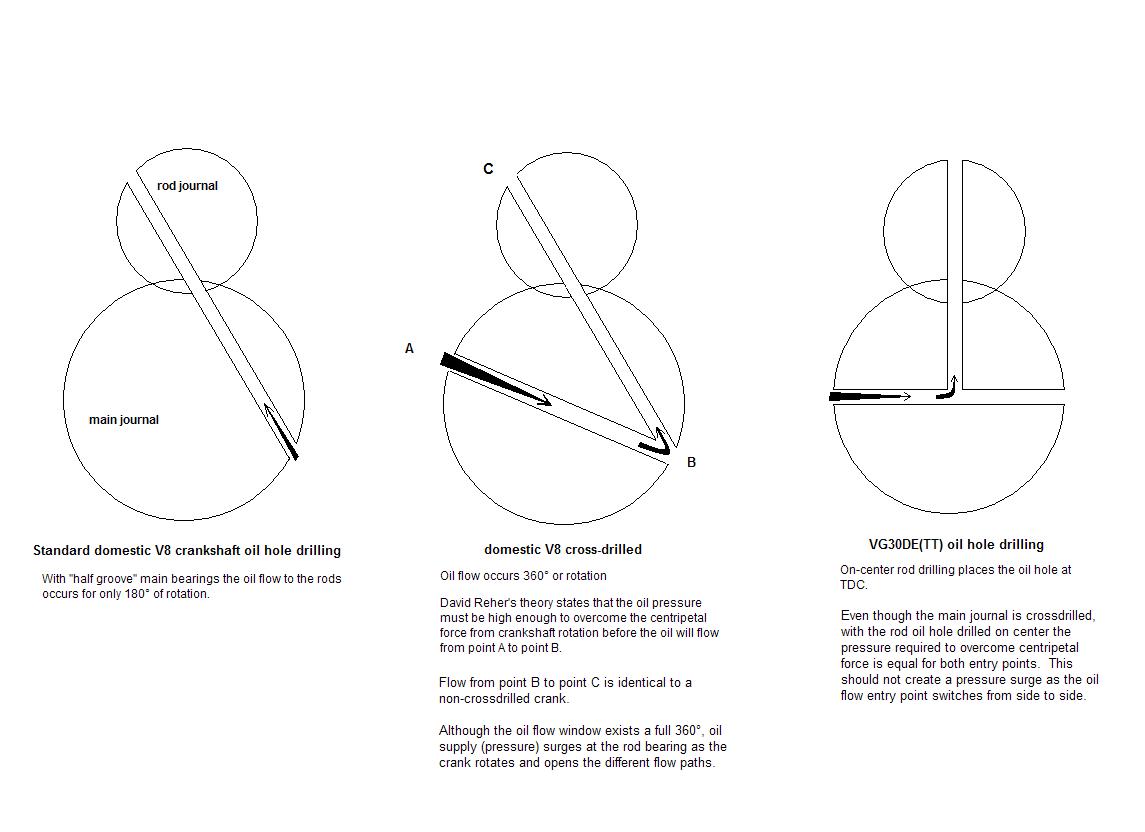| Message |
Ok everyone, take a break from writing or reading yet another useless "positive/negative feedback" post
and ponder upon the following: Awhile back people were posting about broken crankshafts and there was some discussion about crankshaft
oiling and the cons of a crossdrilled crankshaft. David Reher of Reher-Morrison, wrote an article explaining his theory with the root of the problem being
crossdrilled oil holes and the oil pressure required to overcome cetripetal force and initiate oil flow to the
rod bearing. Keep in mind this problem is dependent upon RPM and is greatly exaggerated as RPM
increases. So, any opinions? - Does the VG suffer from oil starvation to the rod journal in the same manner as a
crossdrilled V8 does due to crossdrilling, leading to crankshaft failure? My opinion is that it doesn't (for reasons
listed below in the picture). - Some of you that have bought aftermarket cranks, do they have the same oil hole drilling as a stock crank?
- Anyone have first-hand experience with RB or 2JZ cranks and their oil drilling type? These engines seem to
be able to reach 9000+ RPM on stock cranks. Below is a quick sketch to show the different oil drilling types and how the VG differs from the typical
V8 in which crossdrilling was developed. 
|
 |

